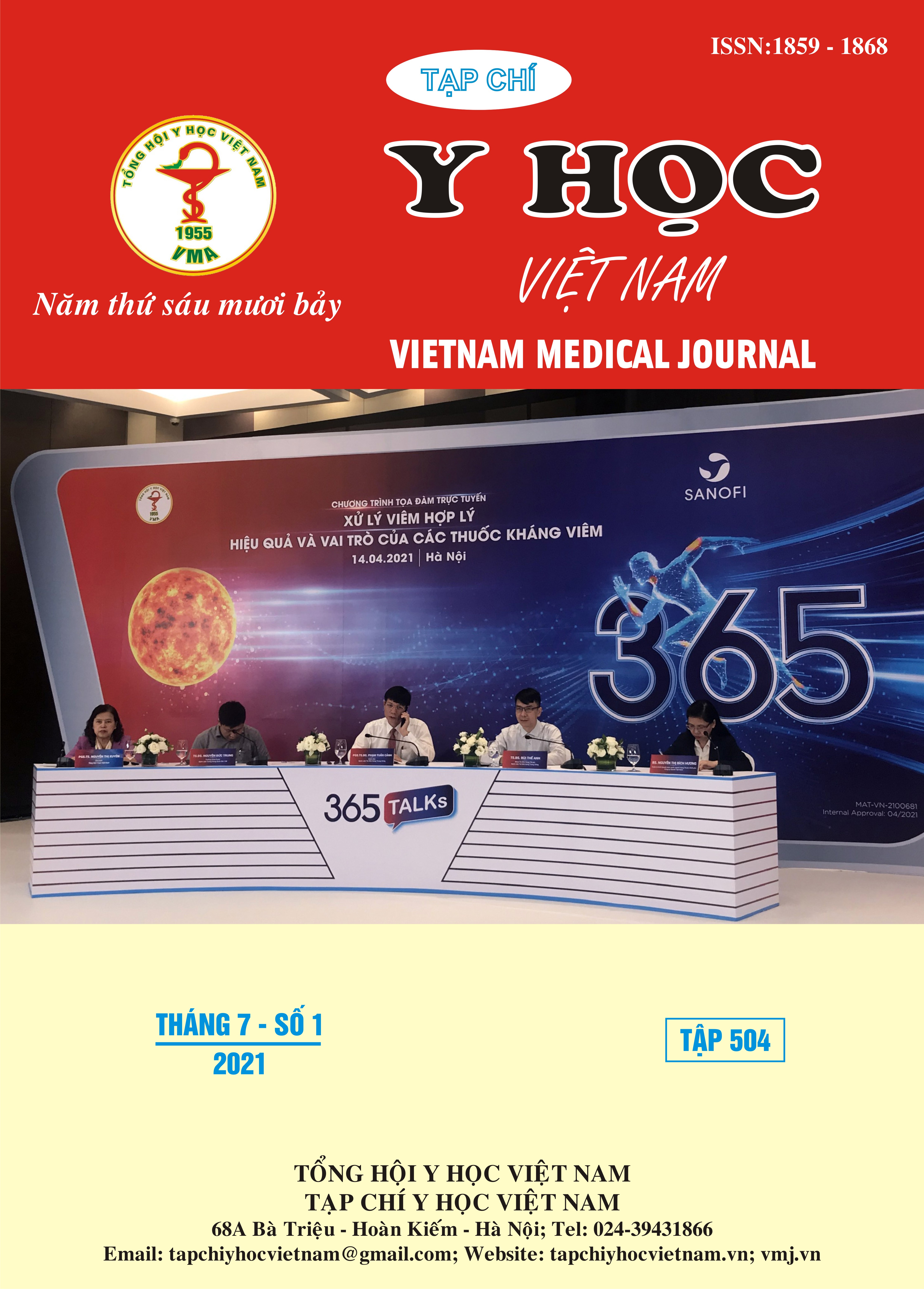WOUND CARE IN TRAUMATIC SOFT TISSUE DEFECT PATIENTS TREATED WITH SKIN GRAFT
Main Article Content
Abstract
Objectives: 1) Description of wound care protocol of skin defect treated by full orsplit thickness skin graft at Aesthetic Plastic Surgery Department, Hanoi Medical University Hospital; 2) Evaluate the patient’s satisfaction on the outcome. Subject and methods: A retrospectivecross-sectional study. Data collection in medical records of 33 traumatic soft tissue defect participants treated by full or split thickness skin graft at Aesthetic Plastic Surgery Department, Hanoi Medical University Hospital from 01 August 2020 to 11 November 2020. Results: Thirty-three participants were included to the study. There were 19 males (57.6%) và 14 females (42.4%), the mean age was 31.6±17.6 years. Traffic accident was the dominant trauma cause with total 28 cases (84.8%), treatment duration was 20.6±8.3 days. All necrotic tissuse was removed (12 cases). All soft tissue defect wound was covered by Urgotul dressing before and after skin graft. The donor site was dressed by Betaplast (7 cases, 21.2%), tetracycline gauze (26 cases, 78.8%). All patients satisfied with the outcome. Conclusion: The success of skin graft in traumatic soft tissuse defect patients not only depends on the operational technique, but also require the nursing care. Necrotic tissue removal and advanced dressing seem to have good effect on the outcome.
Article Details
Keywords
Soft tissuse defect, trauma, skin graft, nurse
References
2. Amstrong D. (2021). Basic principles of wound management..
3. Spear M. and Bailey A. (2009). Treatment of Skin Graft Donor Sites With a Unique Transparent Absorbent Acrylic Dressing. Plastic Surgical Nursing, 29(4).
4. Bộ Y tế Phiếu khảo sát người bệnh nội trú. .
5. Gurtner G.C. Skin graft. Plastic Surgery: Principles. 4th, Elsevier.
6. Struk S., Correia N., Guenane Y., et al. (2018). Full-thickness skin grafts for lower leg defects coverage: Interest of postoperative immobilization. Ann Chir Plast Esthet, 63(3), 229–233.
7. Cancer research UK Melanoma skin cancer incidence statistics, .


